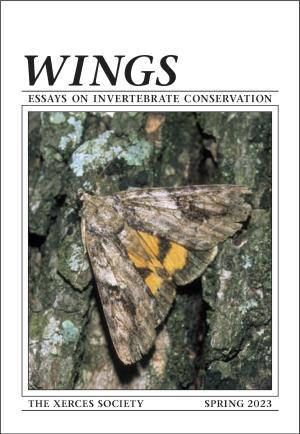
At the core of wildlife conservation is the need to ensure that animals have somewhere to feed, breed, and shelter—that is, habitat. Making that habitat the best it can be may mean balancing many issues, which sometimes include human needs. In this issue of Wings, our writers consider the challenges of light pollution, honey bees in North America, and facilitating agriculture in urban areas.
Conservation Takes More than Science, by Scott Black. Page 3.
Embracing the Dark: Insects Need the Night—and So Do We, by Richard Joyce. We light our streets, buildings, parks, and gardens. Although this has benefits for us, to insects that rely on darkness it can be as disturbing as a bulldozer. Page 5.
Want to Save the Bees? Focus on Habitat, Not Honey Bees, by Rich Hatfield and Matthew Shepherd. Addressing the problem of declining bee populations means tackling root causes such as habitat loss and pesticide use, not simply adding more honey bee hives. Page 10.
Strengthening Communities Through Urban Agriculture, by Stefanie Steele. Growing food can connect people to nature, help build communities, counter urban blight, reduce urban heat sinks, and create places for pollinators. Page 17.
Staff Profile. Stefanie Steele, pollinator conservation specialist. Page 24.
Partner Spotlight. Our firefly conservation work is made possible through collaboration with other individuals and organizations. Page 25.
Xerces News. Updates on Xerces Society projects and successes. Page 26.
Remembrances. Paul Opler, Sarah Anne Hughes, and Dan Meade. Page 30.
